Affiliate disclosure: This post may contain affiliate links. Please see our Privacy Policy.
Canning diced tomatoes is an easy way to preserve tomatoes at home. This simple water bath canning recipe preserves tomatoes without peels or seeds, and ready chopped for your favorite recipes.
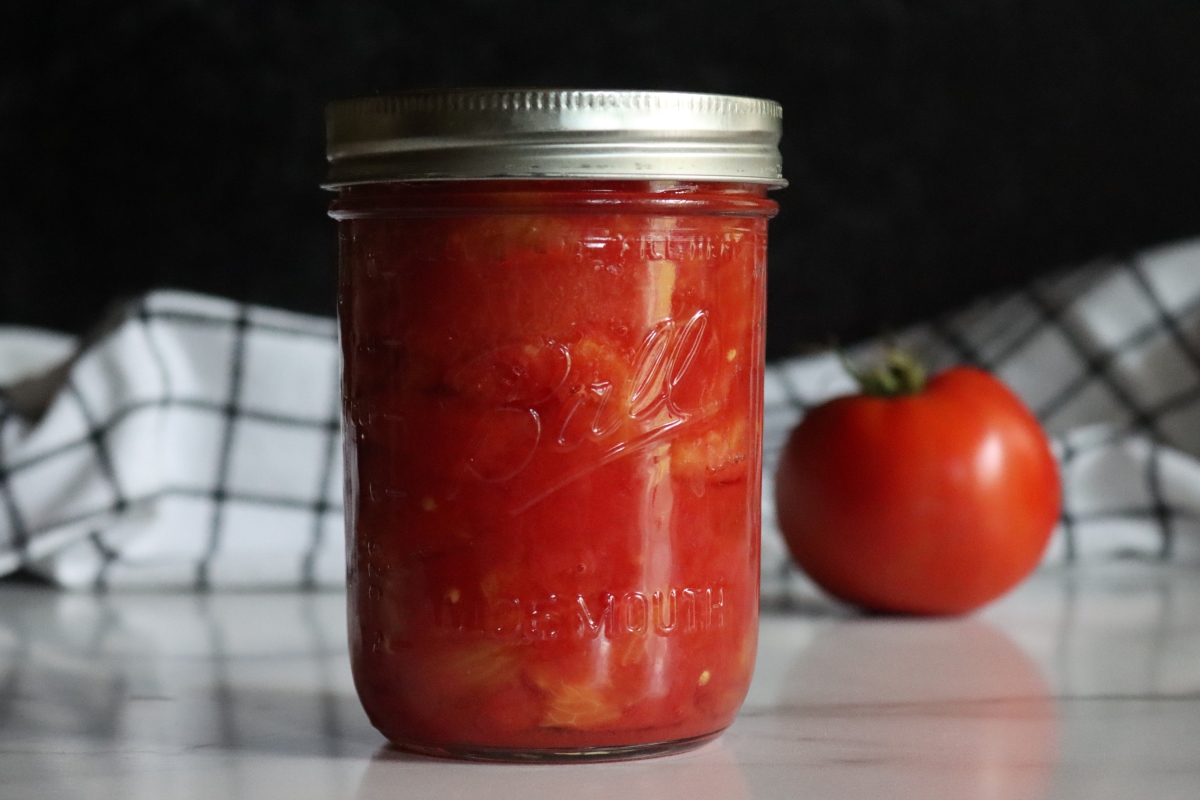
In my opinion, a jar of diced or crushed tomatoes is one of the most versatile items you can keep stored in your pantry. Tomato sauce, salsa, enchilada sauce, chili, and tomato soup are just some of the delicious meals you can make with a humble jar of tomatoes and a handful of other ingredients.
When the tomatoes are homegrown (or purchased from a farmers market), the results are that much more impressive. I like to grow several varieties of tomato every year for canning purposes. Roma-style tomatoes, which have a firmer texture and less seeds as well as a sweet flavor, will hold their shape the best for canning.
Over the years and through experimentation, I’ve discovered that my favorite varieties are Amish Paste, Hogs Heart, and Opalka, but any Roma-style tomato will work well for canning. I’ll leave it up to you to decide whether you want keep your tomatoes to yourself or give some to your lucky friends and neighbors.
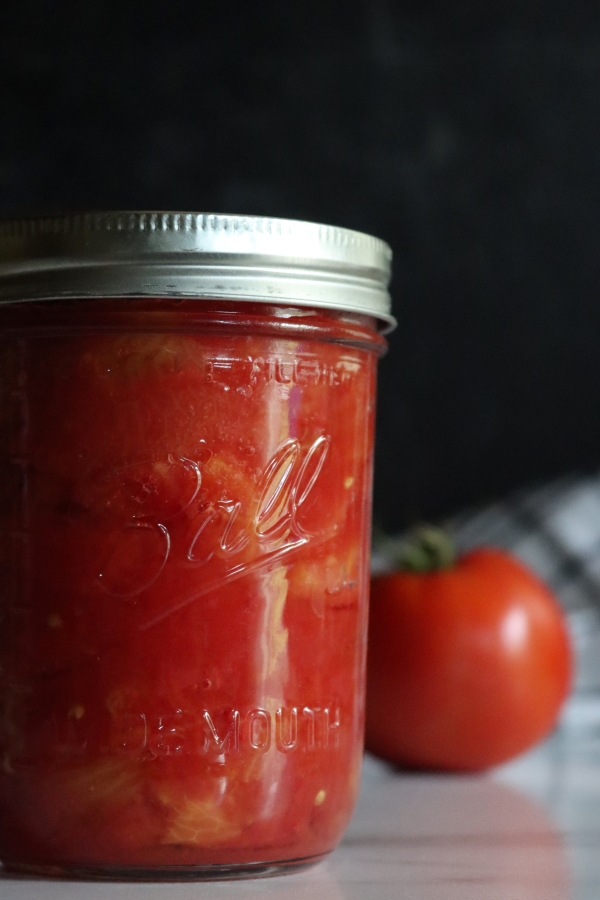
Diced Tomatoes vs. Crushed Tomatoes
The process for canning diced tomatoes and crushed tomatoes is exactly the same, but the process for making them is ever so slightly different.
Diced tomatoes are as the name suggests, diced then heated and packed into jars. The diced tomato pieces let out juice during cooking and canning, so the result is tomato dices in tomato juice.
Crushed tomatoes start by heating/mashing about 1/4 of the tomatoes, making a quick tomato sauce before the rest of the tomato dices are added (but not crushed). This results in diced tomatoes in a slightly thicker tomato sauce, which is generally referred to as “crushed tomatoes.”
Diced Tomato Yields
This is a large batch recipe for canning diced tomatoes, and starts with a full canner load of either pints or quarts. You’ll need quite a few tomatoes to fill the batch.
For a canner load of 7 quarts, I use 22 pounds of fresh tomatoes; for 9 pints, use 14 pounds of tomatoes.
Preparing Diced Tomatoes for Canning
Canning diced or crushed tomatoes starts with peeling and then dicing the tomatoes.
Peel the tomatoes by first blanching them in boiling water for 30 to 90 seconds until their skins crack. As soon as they crack, drop them into a bowl of ice water to stop the cooking.
Use your fingers to gently slip the peels off the tomatoes.
The process is pretty straightforward, but I also have a detailed tutorial on how to peel tomatoes that walks you through it step by step.
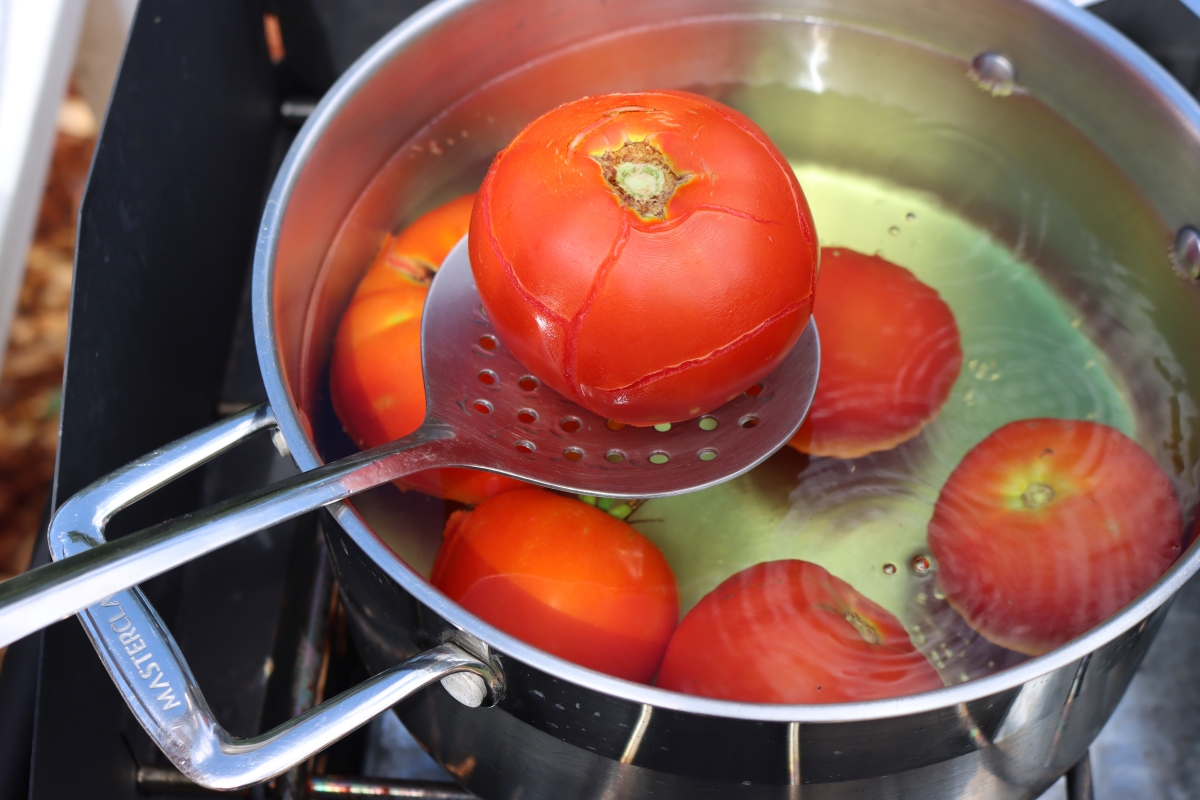
After the tomatoes are peeled, they also need to be seeded.
You can actually technically leave both the peels and seeds in the diced tomatoes, and while that’s simpler, it results in a much lower quality product.
The peels will separate from the tomatoes during canning, leaving curled strings of tough peel in the mix. The seeds will also separate, and both can cause bitter flavors in canned goods.
Seeding is even easier than peeling, so don’t skip it.
Simply slice the tomatoes in half and then squeeze to remove the seeds. The should slip out easily, but you can also use a spoon to pull out any stubborn ones hiding deep in there.
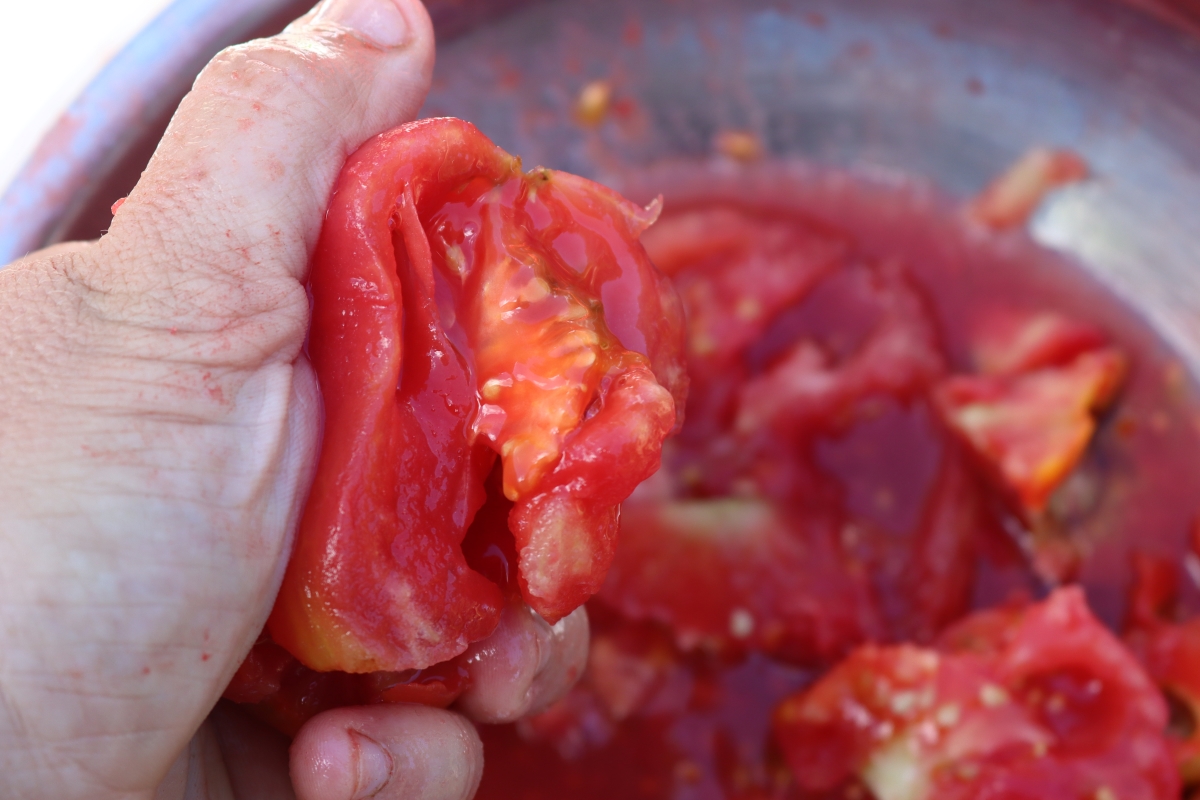
Once peeled and seeded, it’s time to dice the tomatoes before canning.
When dicing the tomatoes, the pieces don’t have to be exactly the same size. Aim for pieces that are about 1/2- to 1-inch wide, either cut into a formal dice or left in longer strips.
Again, seeding is optional, and some people prefer to leave the seeds in the tomatoes because it cuts down the prep time. I always remove them, it’s only a small amount of work and it ends up making a big difference.
Place the diced tomatoes into a stock pot (no need to add liquid, they’ll let out their own juice).
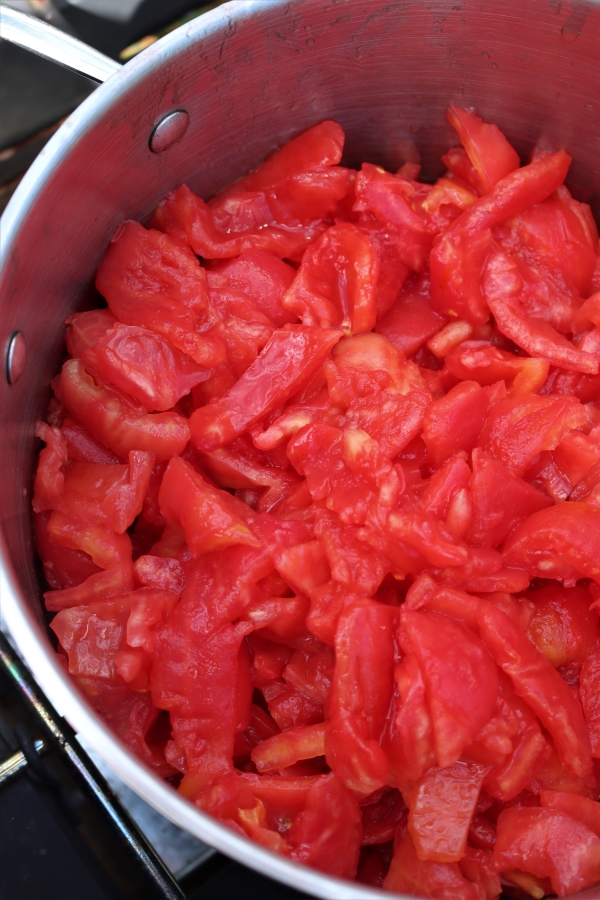
Packing Diced Tomatoes for Canning
When I’m canning diced tomatoes, I always opt for a hot pack (which means, as the name suggests, the diced tomatoes are hot when being distributed among the jars). This isn’t to do so much with food safety, but for quality reasons. If the diced tomatoes are processed while raw, the jars will end up half empty because the tomato pieces will shrink and a large volume of liquid will be released.
By using the hot pack canning method, there’s no need to add any extra canning liquid. A quick 5 minutes in boiling water is all that’s needed to help release excess liquid and shrink the tomato pieces, remove unwanted air, and prevent the tomatoes from floating in the jars after processing.
Acidification for Canning Tomatoes
Although tomatoes are often thought of as being acidic, they actually have a fairly neutral pH. The tomatoes our grandparents enjoyed were likely more acidic, but tomato varieties have since been bred to have a naturally sweeter taste. Because of this, it’s important to acidify canned tomatoes using citric acid or bottled lemon juice. Don’t use fresh lemon juice for canning, bottled lemon juice has a pH that’s been tested as being food safe.
According to the guidelines presented by the National Center for Food Preservation, “To ensure safe acidity in whole, crushed, or juiced tomatoes, add two tablespoons of bottled lemon juice or 1/2 teaspoon of citric acid per quart of tomatoes. For pints, use one tablespoon bottled lemon juice or 1/4 teaspoon citric acid. Acid can be added directly to the jars before filling with product.”
While it’s possible to use white vinegar for acidification, it can leave an unpleasant flavor when used to acidify tomatoes and I strongly recommend that you don’t use it.
Unless you’re making tomato paste, which is much thicker, it’s best to distribute the citric acid or lemon juice among the jars before adding the diced or crushed tomatoes. This method guarantees equal distribution of the acid and ensures you won’t forget to add it to the recipe beforehand.
You can also add a teaspoon of salt to the jar along with the citric acid or lemon juice. The salt is optional, but it’ll intensify the taste of the finished tomatoes without having to add any other type of seasoning. I usually skip the salt at canning time, and add it when I use them in cooking, but it’s up to you.
Hot Pack
Prepare a boiling water canner or pressure canner, jars, and 2-piece lids before you proceed with this next step.
Diced tomatoes should always be canned using a hot pack, which simply means the tomato pieces are briefly heated before being added to the jars. To do this, simply add the diced tomato to the saucepan and boil for 5 minutes.
Immediately afterwards, carefully fill the prepared jars with the hot tomatoes, leaving 1/2-inch of headspace.
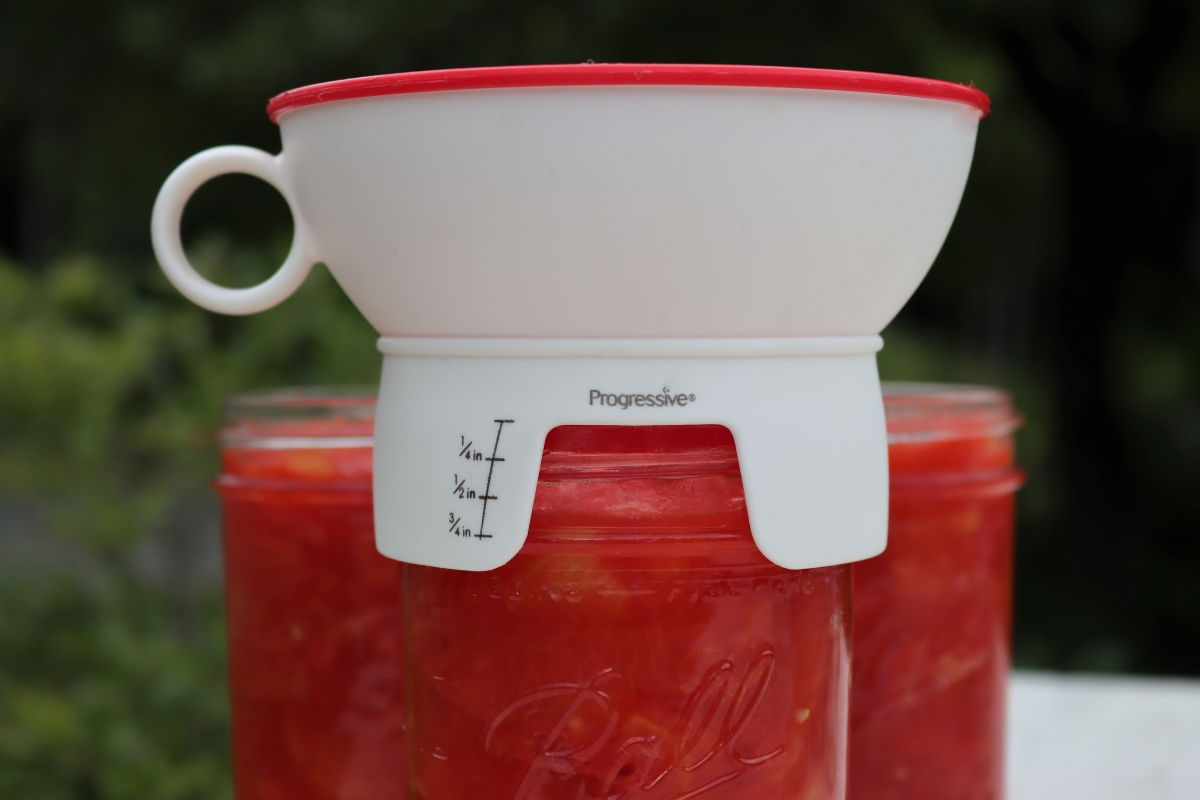
If you want to make crushed tomatoes, the method is the same only you’ll want to add 1/4 of the tomato pieces to the saucepan and crush them before stirring in the rest of the tomatoes.
Apply 2-piece lids, adjusting the rings until fingertip tight (not too loose, but not too tight — once the ring stops turning freely, it’s tight enough).
You’ll notice that this method for canning diced tomatoes doesn’t call for any liquid, only the heated tomatoes. As the jars are being processed, the heat will cause the tomatoes to release their natural juices. The result is pure concentrated tomato flavor that’s unlike any store-bought tinned tomato you’ve ever tried.
Canning Diced Tomatoes
Whether you plan on canning the diced tomatoes using a boiling water bath canner or a pressure canner, the processing times are fairly short for either type of canner.
If you’re new to canning, and depending on which method you choose, you’ll want to read my guide to water bath canning or pressure canning before you get started.
Water Bath Canning Diced Tomatoes
The times for canning diced tomatoes are the same as for crushed, as well as the pressure setting and time if you want to use a pressure canner. For altitudes under 1,000 feet, the processing time in a water bath canner is 35 minutes for pints and 45 minutes for quarts.
For higher altitudes, refer to the table below:

Once the tomatoes have been processed, remember to let the jars sit in the hot water for 5 minutes before transferring to a clean towel or canner rack. Leave at least 1-inch of space around the jars and give them at least 12 hours (and up to 24 hours) to come to room temperature.
When the jars and their contents are at room temperature, press down on the lid to check if it sealed properly. Lids that pop downward and then pop back up indicate that the jar is not properly sealed, while the lid on a jar that is properly sealed won’t move. This check should only be performed when the jars have cooled completely, as doing it while hot can cause a false seal.
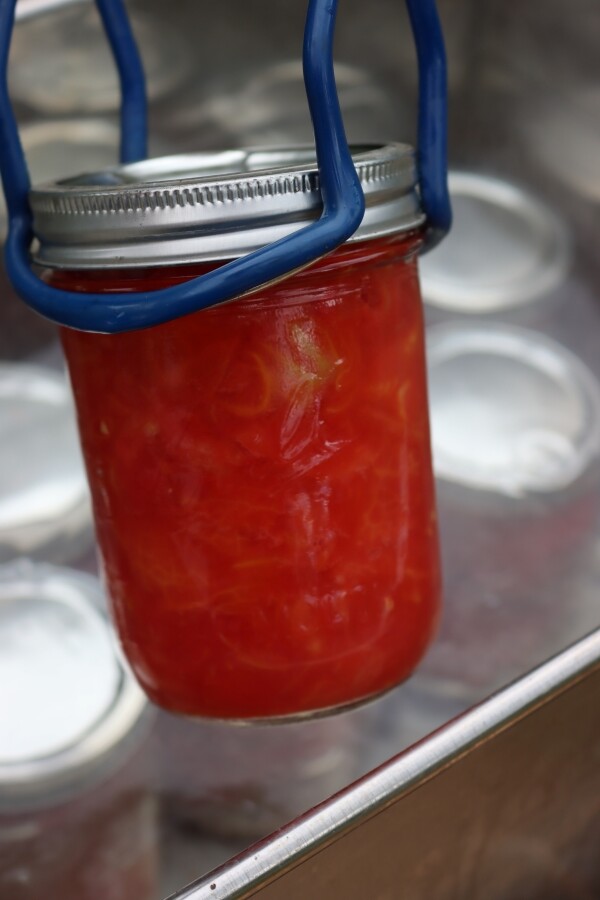
Pressure Canning Diced Tomatoes
Process times are quicker if you’re pressure canning diced tomatoes, but it’s important to note that you’ll still need to add lemon juice or citric acid. Many people assume that if they pressure can diced tomatoes they can skip that step, but it’s not true.
Pressure canning times were tested and developed for tomatoes with added acidity, and these times are not sufficient if you don’t add lemon juice.
Since these can be safely waterbath canned, you can pressure can them at as little as 5 pounds of pressure, or choose to can them at higher pressure for less time. The table below outlines all the options for you, but be sure to choose the correct table based on the type of water bath canner you’re using, either weighted gauge or dial gauge.
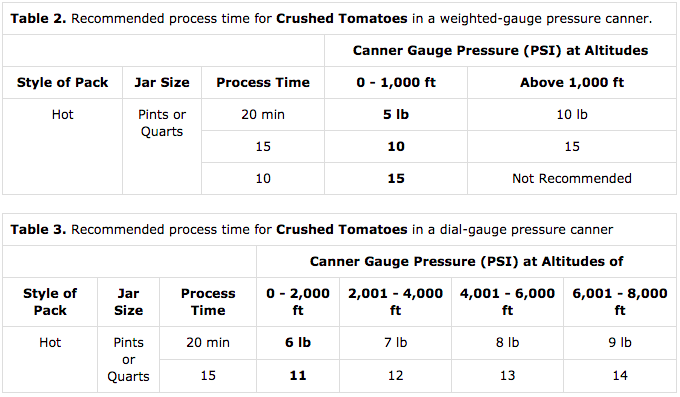
If properly canned and sealed, diced tomatoes will maintain quality on the pantry shelf for 12-18 months. Store in the refrigerator once opened.
Tomato Canning Recipes
Need a few more tomato canning recipes to put up the harvest?
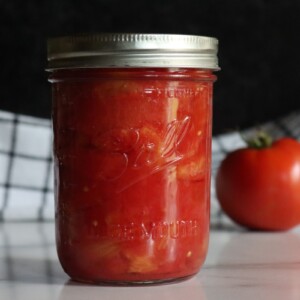
Canning Diced Tomatoes
Ingredients
- 22 lbs. tomatoes, for 7 quarts or 14 lbs. tomatoes (for 9 pints)
- Citric Acid or Bottled Lemon Juice, mandatory
- Salt
Instructions
- Prepare a water bath canner and canning jars before beginning.
- Wash tomatoes and remove skins by blanching the fruit in hot water. Transfer to a bowl of cold water when the skin begins to curl and remove the skins.
- Core and halve the tomatoes, using your fingers and a small teaspoon to remove the seeds and pulp.
- Dice the peeled, cored and seeded tomatoes into 1/2-inch to 1-inch strips or squares.
- Prepare a hot water bath canner, jars, and 2-part lids for canning. If using a pressure canner, see below for processing times and PSI.
- Add 2 tablespoons of bottled lemon juice OR 1/2 teaspoon citric acid to each quart jar. If using pint jars, add 1 tablespoon bottled lemon juice or 1/4 teaspoon citric acid to each jar.
- Optionally, add up to 1 teaspoon of salt to each jar (if desired).
- Place the diced tomatoes in a stock pot and cook over high heat for 5 minutes until heated through (don't add more liquid, the tomatoes will release their own juices as they cook). *For Crushed tomatoes, see notes.
- Pack the hot tomatoes into the prepared jars, leaving 1/2-inch headspace. Apply 2-part lids and gently screw on the rings until fingertip tight.
- Load the jars into a water bath canner and process for 45 minutes if using quart jars or 35 minutes if using pint jars. Theses times are for elevations lower than 1,001 feet — see note below for altitude adjustments.
- When the canning time has finished, let the jars sit in the hot water for 5 minutes before removing them with a jar lifter.
- Arrange the hot jars on a clean towel or canning rack, leaving at least 1-inch of space around the jars to allow for even air distribution.
- Let the jars sit for 12 to 24 hours or until the contents reach room temperature.
- Once the jars have cooled, check the seals and remove the rings. Store any unsealed jars in the fridge and use within a week.
- Label and store canned diced tomatoes on the pantry shelf for 12 to 18 months.
Notes
Summer Canning Recipes
Looking for more summer canning recipes?
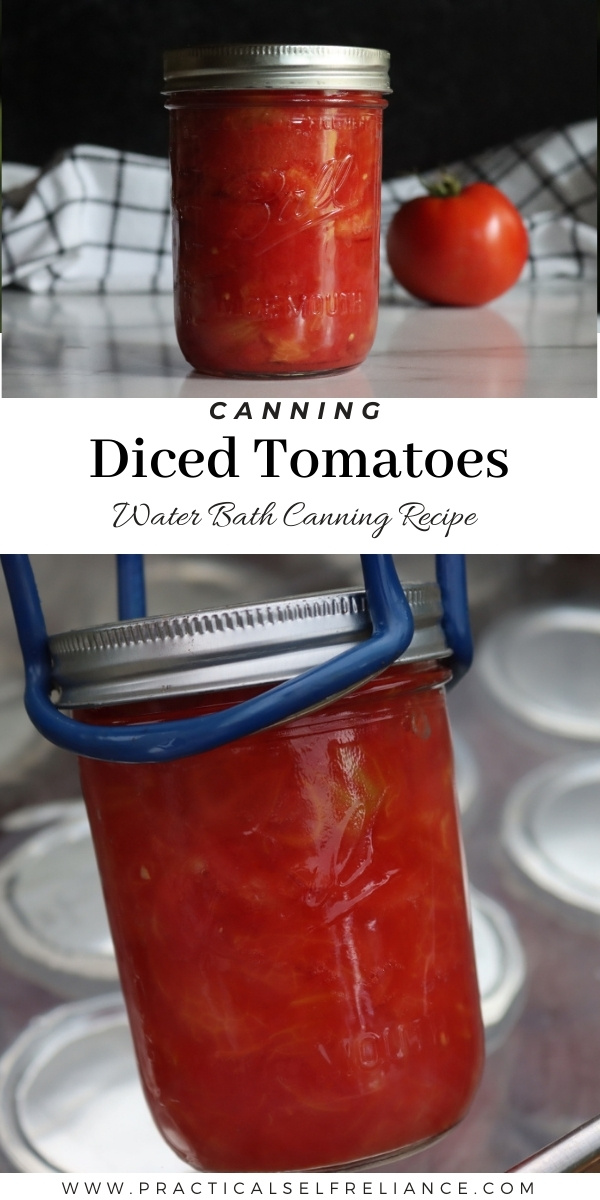
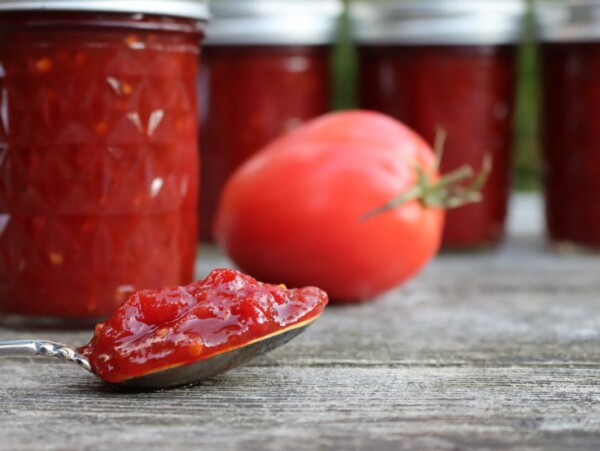
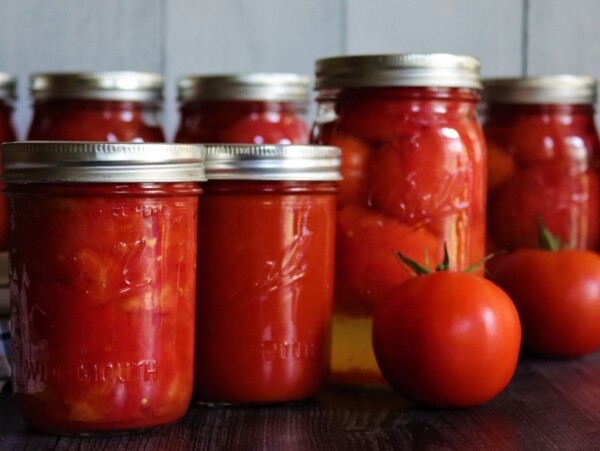
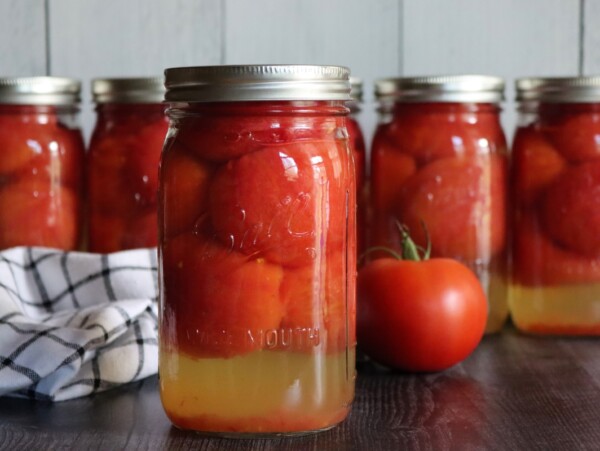
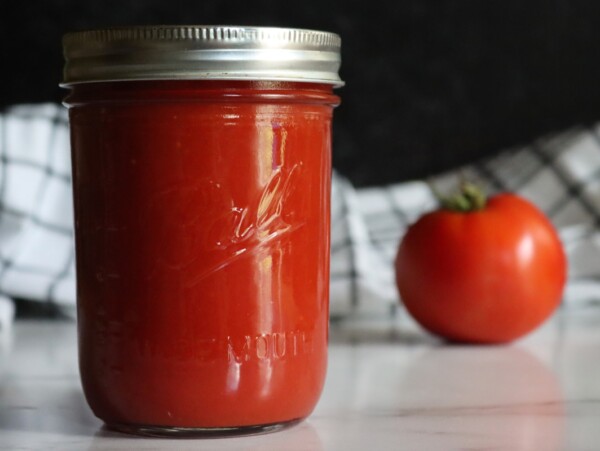










Hello,
I am in a canning group and the teacher said that there is no safe approved method for canning diced tomatoes. Is this a new tested method?
It is safe to can diced tomatoes but sometimes they don’t stay diced. This is why there aren’t any tested recipes.
I’m new to canning and this is only the 3rd thing I’ve tried. The time it took to prep everything was very long – no where near 40 minutes. Are there shortcuts that I’m not aware of? I used all Roma tomatoes. I boiled/put in cold water then peeled. I removed seeds, etc. and diced by hand. It took me hours to do 14 pounds of tomatoes. I’d love to try this again …but in less time.
Thanks for your help.
There is another alternative to the blanching method. You can actually pop the tomatoes into the freezer. When you are ready to process them, just pull them out and put them in some warm water. The skins will slip right off and I have found this method to be much faster than blanching. Part of the speed in processing will also come with time. The more you do it, the faster you will get.
Can I place some Italian seasoning in with the tomatoes?
It is generally recognized as safe to add a moderate amount of dried herbs to canning recipes. You just want to start off with a small amount at first. Canning can sometimes affect the flavor of the herbs.
Hi Ashley,
When packing my jars would I use any of the juice produced in the 5 minute process or just the tomato pieces? I did & had the separation, thinking that is what caused it. All still sealed fine but was hoping not to have the water separation.
Thanks you for you time!
Yes you will want to use the juice produced from the tomatoes. Did you do the crushed or diced tomatoes?
What is the processing time for half pints?
You can use the same processing time for pints.